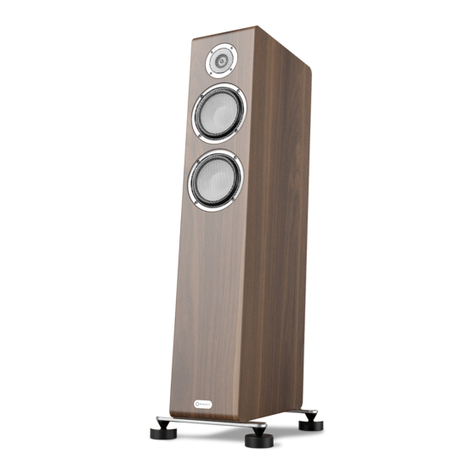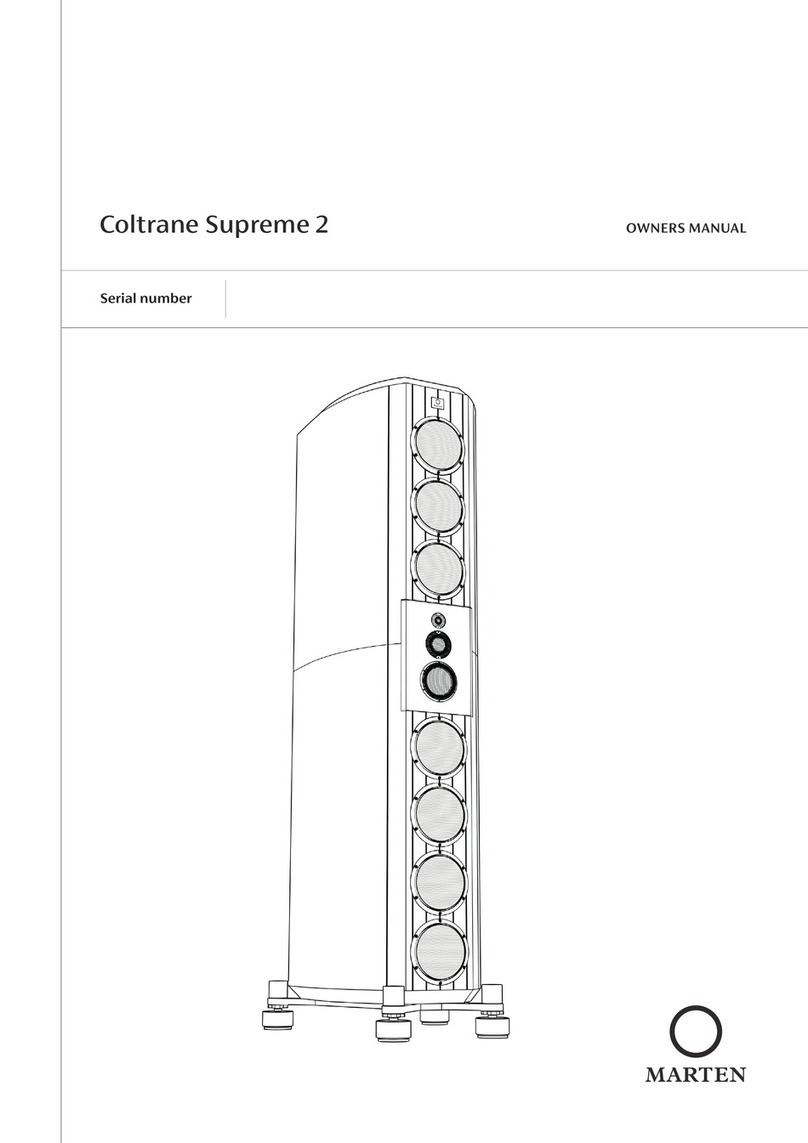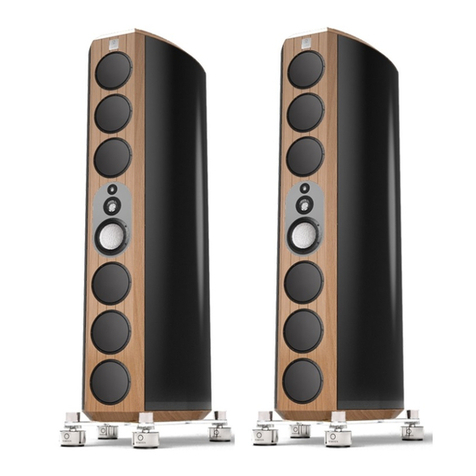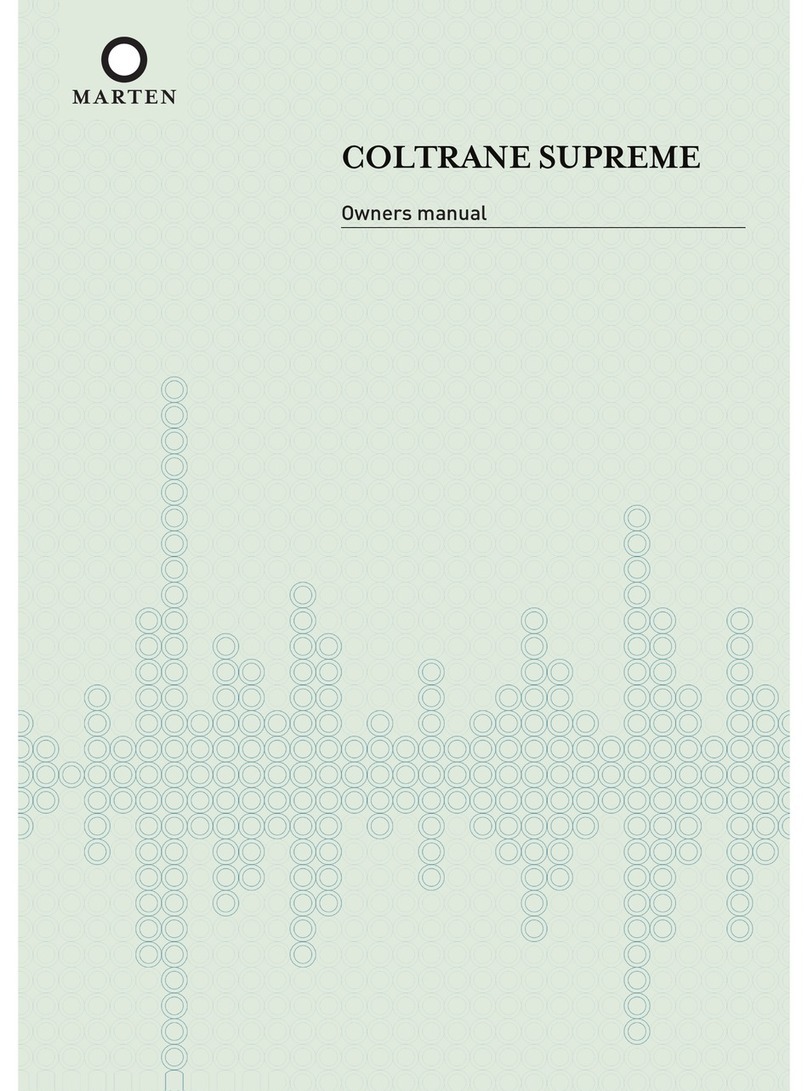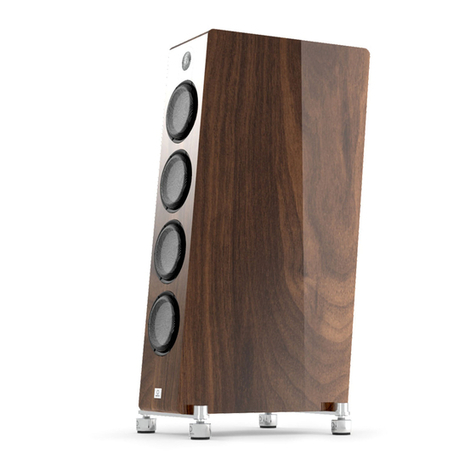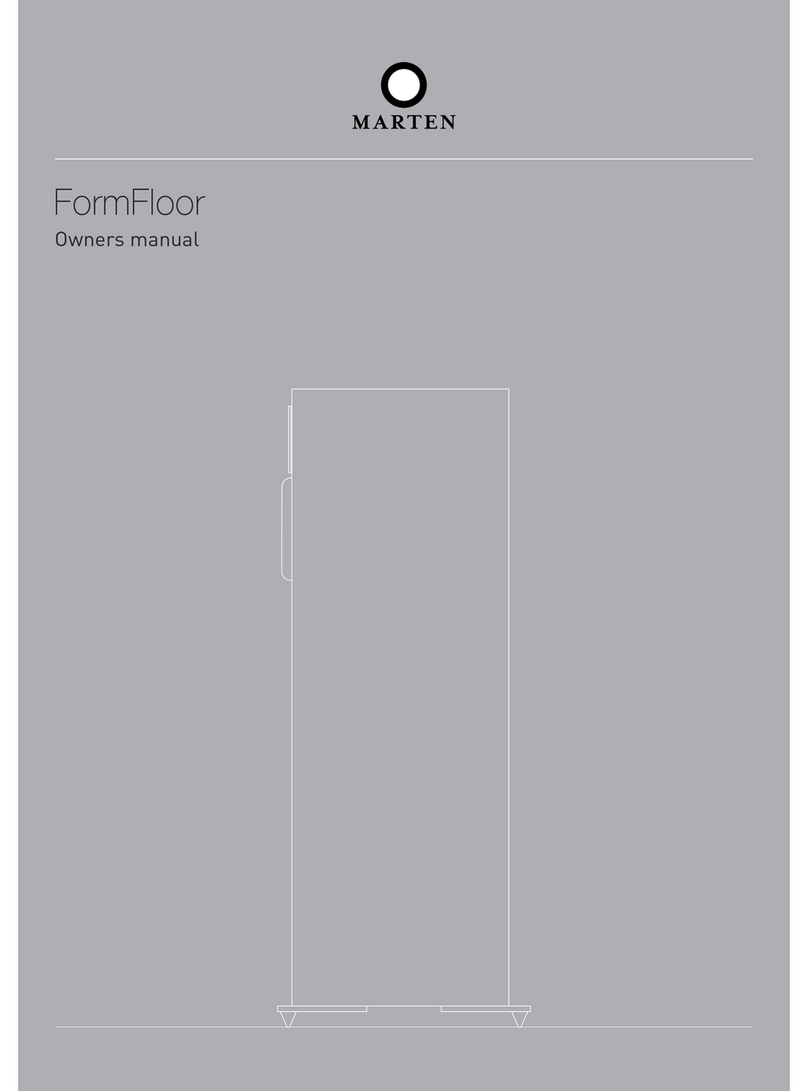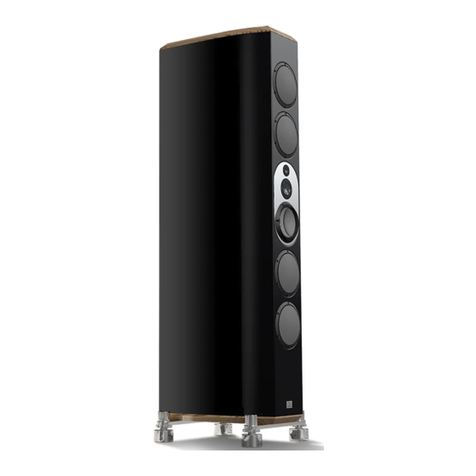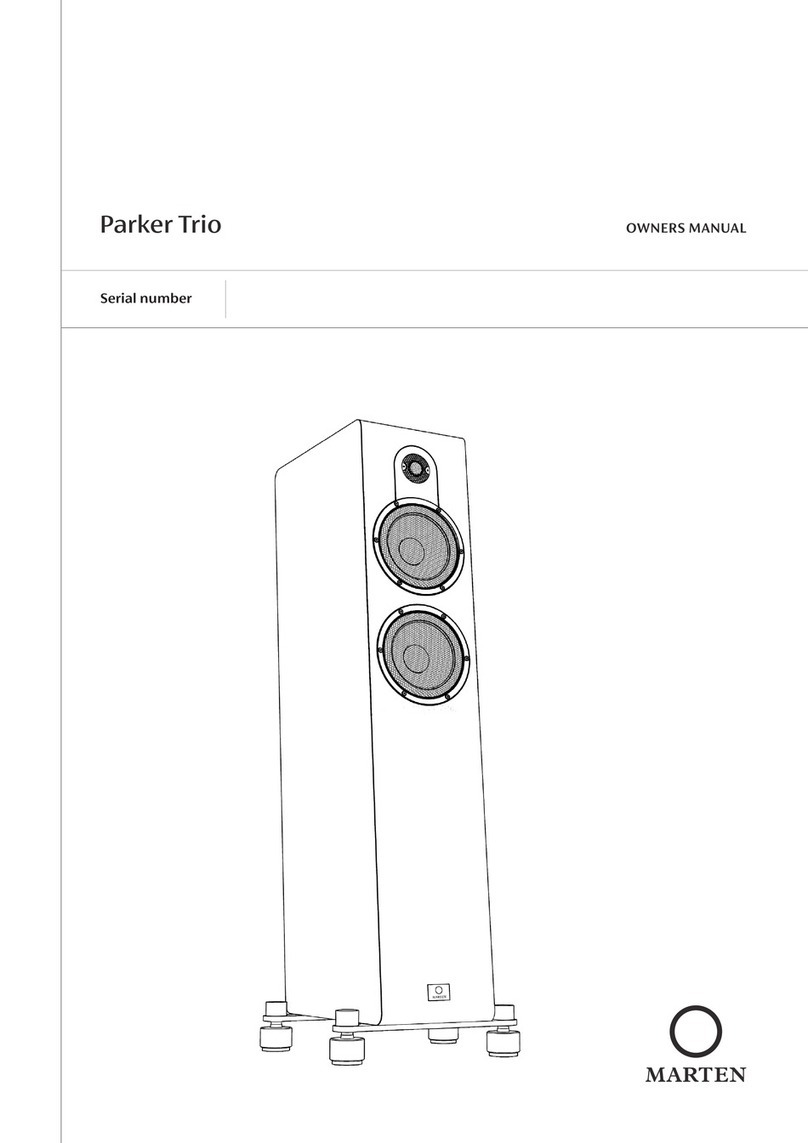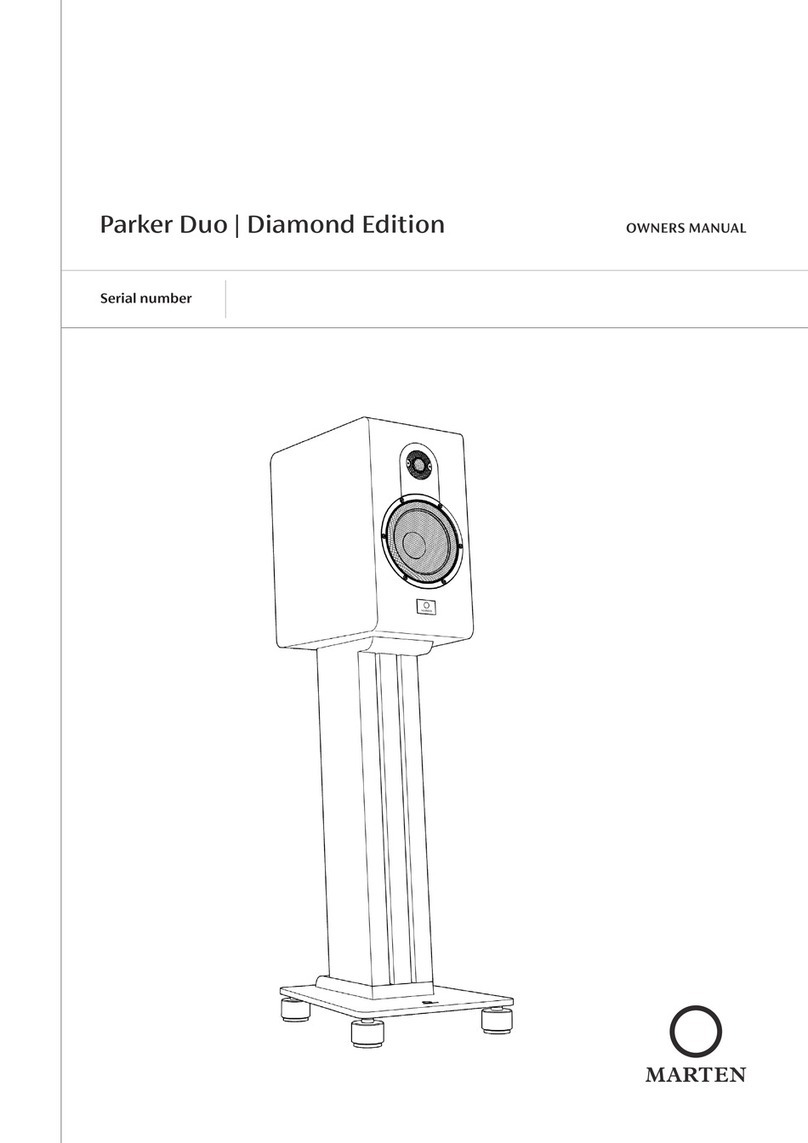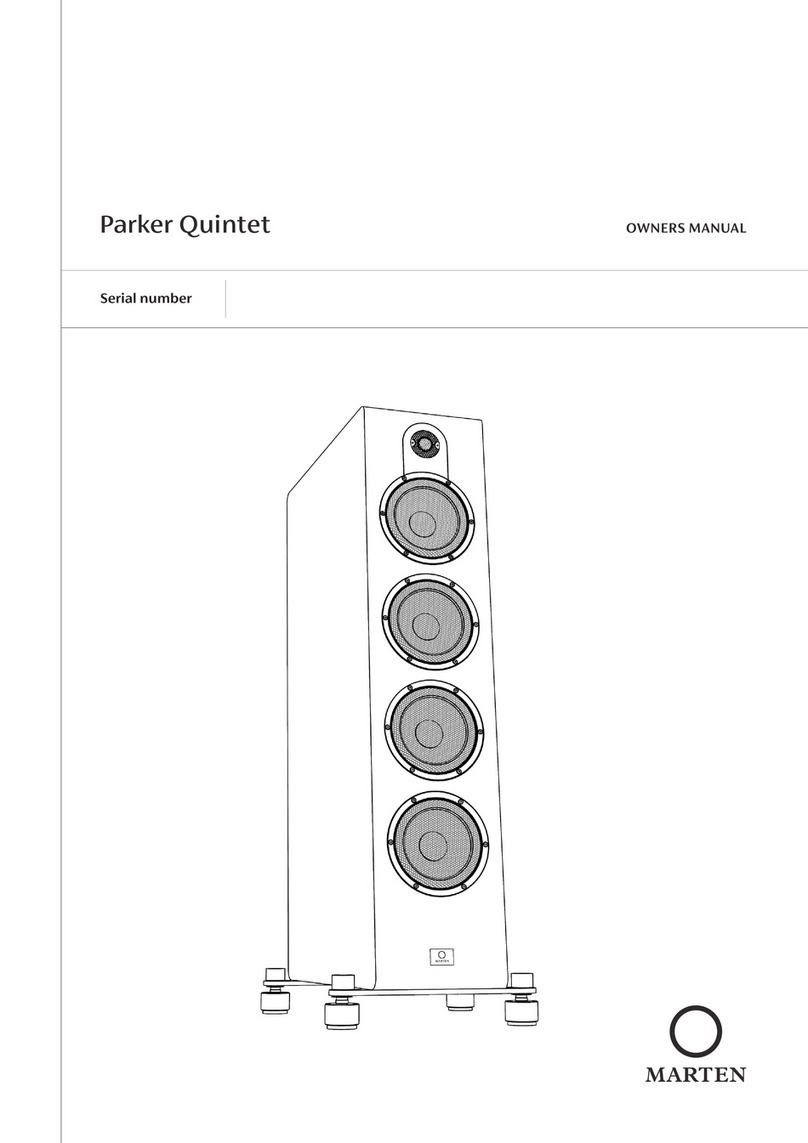7
Positioning
Loudspeaker Placement
Distance to back and side walls
Focusing the Loudspeakers
Toe-in
Bass-adjustment
Every room is shaped and decorated differently, and is therefore presents unique
requirements for the positioning of loudspeakers. Your loudspeakers will function at
their best when placed on a flat, stable surface.
The space between the loudspeakers should be free. Ideally, the space should be
symmetrical in the area around the loudspeakers. We recommend experimenting with
the placement of your loudspeakers in order to obtain the best balance, openness, and
perception of depth.
One of the things that make Marten loudspeakers different is that they have been
designed to stand relatively close to the back wall of your listening room. Other
manufacturers usually recommend that their speakers be free-standing in the room to
avoid reflection from the back wall. However, for good results, the Bird should be no
closer than 40 cm (15.7 Inch) from the rear wall. Marten loudspeaker should not be
placed close to a side wall, as reflections from these can disturb the depth of the
sound image.
Due to their highly advanced technology, the Bird loudspeakers will deliver excellent
imaging, even at a relatively close listening distance. The distance ultimately depends
on the room’s shape, size, and your listening taste. Please use track 2 of the enclosed
CD as a guide to focusing the sound image.
The goal is to have balanced sound. Ideally, you should be able to place the recorded
voice in the middle of your speaker arrangement. Ultimately, the shape, size, and
furniture in the listening room all influence the end result, so take some extra time to
experiment with the position of the loudspeakers.
The loudspeakers should normally be toed in toward the listening area to focus the
sound. The amount of toe-in will depend upon your listening preferences and the room
environment and dimensions.
On the back of each Bird loudspeaker, you will find a knob that will allow you to adjust the
bass by 1 dB in three steps. Rotating the knob clockwise will increase the sensitivity, and
rotating it anti-clockwise will decrease the sensitivity. Experiment with this until you
are satisfied
